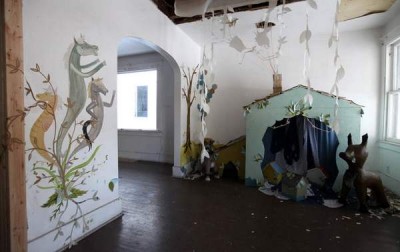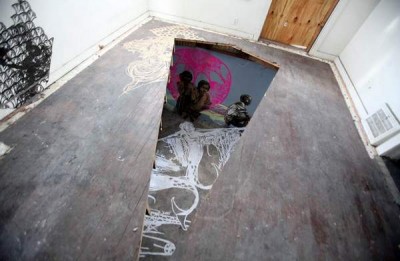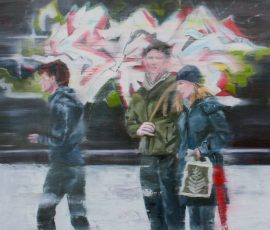The debate over public art forms goes way back and has always been fiery and pointed. No doubt, as the ancient inhabitants of Easter Island raised the Moai, there was someone standing on the sidelines wagging a disapproving finger.
In modern times, the occasional poorly realized statue aside, graffiti attracts most of the ire in regards to art in the public arena. Even today, thirty years after teenagers in New York started sneaking into train yards to spray paint subway cars, we haven’t really figured out what to think of it. The thing is, graffiti is an acquisitive art form — a means of claiming, at least temporarily, a part of the urban landscape for one’s self. Aesthetics aside, the conquest of public spaces is not something our society is not typically fond of, at least when money isn’t changing hands.
Now, in the wake of the global financial meltdown, our complicated relationship with public/street/graffiti art is taking on a new dimension. Whole sections of cities like Detroit, where things were already complicated before the recession, have been completely abandoned. Where most people see nothing but burnt out houses, boarded up windows and desolation, certain artists see a canvas — and the freedom to do whatever they want.
Hence the new question: What happens when something popularly defined as vandalism happens in a place no one cares about? What if someone alters something that’s already ruined? And what happens if it ends up being beautiful?
A recent project, funded by Juxtapoz Magazine, a street art and culture publication based in San Francisco, brought all of these issues to a head. They sent a pack of outstanding young artists to Detroit and let them loose on a stretch of Moran Street in the northwest part of the city. As it happens to work out, the resulting juxtapositions are plentiful and poignant.
Art and artists have a way of transforming urban areas — aesthetically and economically. They are often the precursors of gentrification, and while that’s probably a bit of a stretch just now in a place as damaged as Detroit, it remains to be seen what the exposure that comes along with this project will do to the area. In the end, it may be all for naught if the homes end up meeting a bulldozer’s blade, but even that, in itself would contribute to the complicated dynamic.
If this type of thing gets you thinking, you can view the entire slide show of images here, or read about artist Sallee Oh’s experience on her blog. Additional photos available here.








Comments (0)